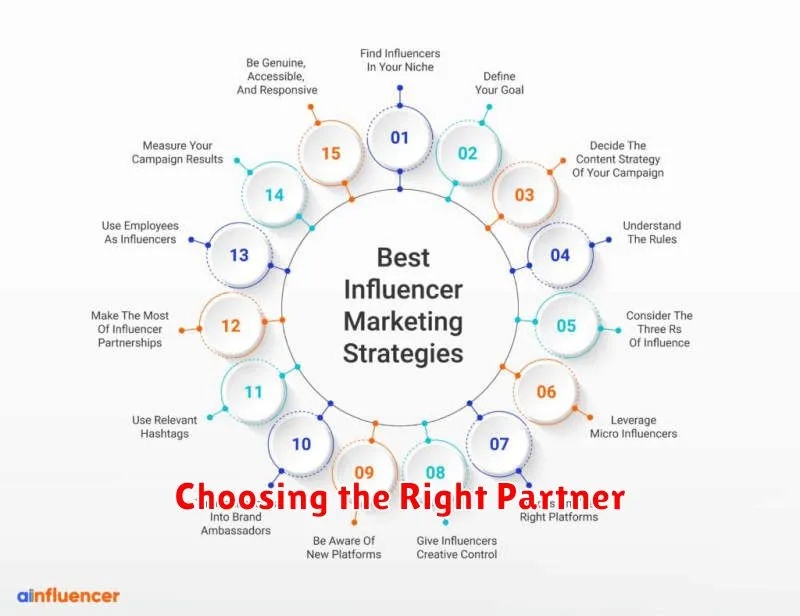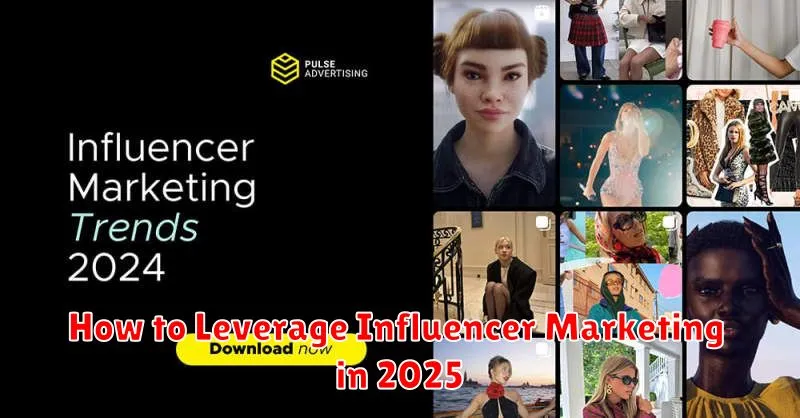In the ever-evolving digital landscape of 2025, influencer marketing remains a powerful strategy for brands to connect with their target audiences. Leveraging influencer marketing effectively can significantly impact brand awareness, drive sales, and build lasting customer relationships. This article will explore the key strategies and tactics to successfully integrate influencer marketing into your marketing plan in 2025 and beyond. Understanding the current influencer marketing trends, identifying the right influencers for your brand, and measuring the return on investment (ROI) are crucial components of a winning influencer marketing campaign.
From navigating the complexities of micro-influencers and nano-influencers to harnessing the power of authentic storytelling and short-form video content, this guide will equip you with the knowledge you need to maximize your influencer marketing efforts. Learn how to develop effective influencer collaborations, negotiate contracts, and measure the success of your campaigns in the dynamic world of social media marketing. By understanding how to leverage influencer marketing in 2025, you can position your brand for growth and stay ahead of the competition in the digital marketplace.
The Evolution of Influencer Marketing
Influencer marketing has undergone a significant transformation. Early iterations focused primarily on celebrity endorsements and product placements. The rise of social media platforms democratized influence, shifting power towards individuals with dedicated, niche audiences.
The increasing sophistication of digital analytics has also played a crucial role. Measurable results are now expected, moving beyond vanity metrics like follower count towards engagement, conversions, and ROI. This data-driven approach allows for more targeted campaigns and refined strategies.
Authenticity has become paramount. Consumers are increasingly discerning, prioritizing genuine connections and relatable content over heavily-produced advertisements. This has led to the rise of micro and nano-influencers, who often foster stronger relationships with their followers.
Looking ahead, influencer marketing will continue to evolve alongside technological advancements. Short-form video, interactive content, and the integration of augmented reality (AR) and virtual reality (VR) are poised to reshape the landscape, offering new avenues for brands to connect with their target audiences.
Micro vs Macro Influencers
When devising your influencer marketing strategy, understanding the distinction between micro and macro influencers is crucial. Macro influencers boast extensive reach, often numbering millions of followers. They provide widespread brand awareness and significant potential for impressions. However, their engagement rates can be lower, and their services come at a premium cost.
Micro influencers, on the other hand, cultivate smaller, highly engaged communities, typically ranging from 1,000 to 100,000 followers. Their strength lies in their niche expertise and authentic connection with their audience. This fosters higher engagement rates and stronger trust, making them ideal for targeted campaigns and driving conversions. Their cost-effectiveness also makes them an attractive option, especially for businesses with limited budgets.
Choosing the Right Partner

In the dynamic landscape of 2025 influencer marketing, identifying the right partner is paramount to success. Relevance reigns supreme. Align your brand with influencers whose audience demographics and content themes resonate with your target market. A beauty influencer, for example, might not be the best fit for promoting software solutions.
Authenticity is crucial. Look for influencers who genuinely believe in their message and whose values align with your brand. Forced partnerships often appear inauthentic and can damage your brand’s reputation. Consider an influencer’s engagement rate. High follower counts are less important than genuine interaction. An influencer with a smaller but highly engaged audience can be far more effective.
Transparency is also key. Ensure your chosen influencer adheres to disclosure guidelines regarding sponsored content. This fosters trust with their audience and protects your brand from legal and ethical pitfalls. Finally, establish clear campaign objectives and measurable metrics from the outset. This allows you to assess the effectiveness of your influencer partnership and make data-driven decisions for future campaigns.
Contract and Collaboration Tips
When engaging in influencer marketing, a well-defined contract is essential. It protects both you and the influencer, ensuring clear expectations and deliverables. Key elements to include are the scope of work, payment terms, content usage rights, and termination clauses.
Transparency and open communication are crucial for a successful collaboration. Establish clear communication channels and maintain regular contact throughout the campaign. Provide the influencer with detailed briefs outlining your brand’s messaging and campaign goals. Encourage creative input from the influencer while ensuring alignment with your overall strategy.
Clearly define deliverables. Specify the type and number of posts, stories, or videos required. Outline the desired format, length, and any specific hashtags or mentions to be included. Establish a timeline for content creation and delivery.
Performance measurement is key to evaluating the success of your influencer marketing campaigns. Agree upon key performance indicators (KPIs) upfront, such as reach, engagement, website traffic, or conversions. Use analytics tools to track and measure the impact of influencer content.
Creating Authentic Campaigns
In 2025, authenticity will be paramount. Consumers are increasingly savvy to disingenuous marketing tactics. Authenticity builds trust, and trust drives conversions. Partnering with influencers whose values align with your brand and whose audience resonates with your target demographic is key.
Brief influencers thoroughly. Provide them with key messaging points, but allow them creative freedom to integrate your product or service into their content naturally. Avoid overly scripted campaigns. Influencers understand their audience best and know what type of content performs well. Trust their expertise.
Transparency is crucial. Clearly disclose the partnership between the brand and the influencer. Using proper hashtags like #ad or #sponsored is not only ethically sound but also builds trust with the audience. Consumers appreciate honesty and are more likely to engage with transparent content.
Focus on long-term partnerships rather than one-off campaigns. Cultivating lasting relationships with influencers allows for deeper integration of your brand into their content and fosters a stronger connection with their audience. This results in more genuine endorsements and a greater return on investment.
Budgeting for Influencer Work
One of the most crucial aspects of influencer marketing is budgeting. Accurately estimating costs is essential for a successful campaign. Influencer marketing budgets vary significantly depending on several factors.
The influencer’s tier plays a major role. Mega-influencers command higher fees than micro-influencers. Engagement rates also affect pricing. Influencers with high engagement often charge more. The scope of work is another key factor. Creating high-quality video content typically costs more than a simple social media post.
Platform influences cost as well. Instagram campaigns might have different pricing structures compared to TikTok or YouTube. Finally, campaign length impacts the overall budget. Longer campaigns generally require a larger investment.
Consider creating a spreadsheet to track influencer fees, content creation costs, and platform fees. This will help you stay organized and within budget. It’s also wise to allocate a portion of your budget for unexpected expenses.
Tracking ROI and KPIs
Measuring the effectiveness of your influencer marketing campaigns is crucial. Return on Investment (ROI) is a key metric, demonstrating the profit generated for every dollar spent. Calculating ROI involves tracking conversions directly attributable to influencer activity, such as sales or website visits.
Beyond ROI, Key Performance Indicators (KPIs) provide valuable insights. Relevant KPIs for influencer marketing in 2025 include engagement rate (likes, comments, shares), reach (how many users saw the content), website traffic (clicks to your website from influencer content), and brand awareness (mentions and sentiment analysis).
Utilizing UTM parameters and affiliate links enables precise tracking of conversions and attribution. Dedicated analytics platforms can consolidate data from various sources, providing a comprehensive overview of campaign performance. Regularly monitoring these metrics allows for optimization and adjustment of strategies to maximize impact and ensure successful influencer marketing campaigns.
Avoiding Common Pitfalls
While influencer marketing offers significant potential, certain pitfalls can hinder success. One common mistake is solely focusing on follower count. Authentic engagement and relevance to your target audience are far more critical. Choosing influencers solely based on large followings may result in reaching a disinterested audience, yielding minimal returns.
Insufficient campaign planning is another frequent error. A clearly defined strategy with measurable goals and key performance indicators (KPIs) is essential for effective execution. Without a structured plan, campaigns can lack direction and fail to generate impactful results.
Ignoring FTC guidelines regarding disclosure can damage brand credibility. Transparency is paramount in influencer marketing. Ensure influencers clearly disclose their partnerships with your brand to maintain consumer trust and avoid legal issues.
Lastly, failing to track and analyze campaign performance is a missed opportunity. Monitor key metrics to understand what resonates with your audience and refine your strategy accordingly. Data-driven insights are vital for optimizing future campaigns and maximizing return on investment.
Influencer Discovery Tools
Identifying the right influencers for your campaign is crucial. Fortunately, numerous tools exist to streamline this process. These tools often offer a variety of filters to narrow your search, such as niche, audience demographics, engagement rate, and reach.
Some platforms offer free searches with limited features, while others provide more comprehensive data through paid subscriptions. Consider your budget and the level of detail required when selecting a tool.
Key features to look for include audience analysis capabilities, performance tracking metrics, and contact information. Some tools even offer campaign management functionalities, allowing you to manage your entire influencer marketing campaign from a single platform.
By leveraging these tools, you can effectively identify influencers whose audience aligns with your target market, ensuring a higher likelihood of campaign success.
Case Studies to Learn From
Examining successful influencer marketing campaigns offers valuable insights. Analyzing case studies allows marketers to understand effective strategies and avoid common pitfalls. Here are a few examples to consider:
A beauty brand partnered with a micro-influencer known for her makeup tutorials. This collaboration resulted in a 15% increase in sales for a specific product featured in the influencer’s videos. The targeted approach of using a micro-influencer resonated with a niche audience, demonstrating the effectiveness of precise influencer selection.
A tech company leveraged a gaming influencer to promote their new headset. By having the influencer livestream gameplay using the headset, the company saw a 20% lift in website traffic. This demonstrates the power of using relevant influencers who align with the target audience’s interests.
A food company collaborated with a lifestyle influencer known for healthy recipes. The influencer created a series of sponsored posts featuring the company’s products. This campaign generated a 10% increase in brand awareness. This highlights the potential of influencer marketing for building overall brand recognition.

